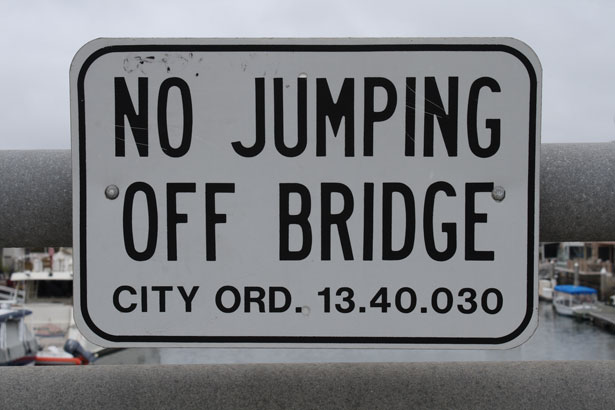Bungee Jumping in Peoria, Arizona
Bungee Jumping in Peoria, Arizona
Bungee Jumping Locations, Companies & Bridges
View Arizona Bungee Jumping in a larger map
Bungee jumping (a.k.a. “bungy” jumping) is a popular sport but there are VERY few professional companies around. We understand the options available are not ideal but that’s the nature of this sport. Due to the number of bungee jumping locations, most people will need to drive 100 miles or more to jump with a professional bungee company. If this is not a feasible option, we recommend searching for a theme park nearby which offers something similar to the bungee jumping experience. You may also consider participating in another extreme sport (such as skydiving) as locations may be more readily available.

There are no business listings for bungee jumping in Peoria, Arizona. Bungee jumping is illegal as of 4/23/12 at the Navajo Bridge in Marble Canyon, Arizona. Therefore, we no longer have a company to recommend to the Arizona area. There are no other business listings in Arizona at this time.
Bordering state options to consider:
Bungee Expeditions jumps at the Rio Grande Bridge in Taos, New Mexico. They also jump at the Dirty Devil, White Canyon and Hite Marina Bridge at Lake Powell in Southern Utah.
We do the research so you can spend less time searching and more time enjoying the extreme sports you love. We search the internet for bungee jumping locations but as new professional bungee companies become available and others do not have a well known presence, letting us know these locations will help grow the online extreme sports community. We greatly appreciate your assistance.
Are you familiar with a new or unlisted company which offers bungee jumping in Peoria, Arizona? Please recommend a bungee jumping company.
Bungee Jumping Safety:
Modern bungee jumping is a relatively safe sport due to operators rigorously checking calculations and the bungee equipment. Injuries and death can still occur as with any sport. Many commercial operators now use full body harnesses to avoid the possibility of a jumper becoming detached from the ankle attachment. That’s an additional step some bungee jumping operators take to ensure the safety of their jumpers. Mistakes have occurred with miscalculations and equipment errors. Injuries that occur during bungee jumping despite safety measures are upper body intravascular pressure, eyesight damage, whiplash and neck damage.
Bungee Jumping Equipment:
There are two types of elastic ropes used in the sport of bungee jumping: braided and unbraided. A factory produced elastic rope, used by many commercial bungee operators, is a braided shock cord consisting of many latex strands enclosed in a durable outer cover. This rope gives a harder, sharper bounce. The second type of rope consists of unbraided cords which can be home-made. This rope produces a softer, longer bounce. Many commercial bungee jumping operators use a full body harness as a backup to the ankle attachment.
Bungee Jumping at the Navajo Bridge in Arizona
Bungee Jumping at the Navajo Bridge in Arizona
